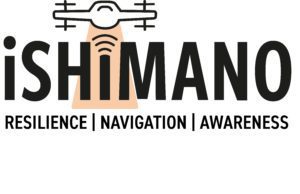Cambridge Sensoriis are proud to have been awarded a place in a pioneering programme designed to make drone delivery to households and businesses a reality.
Known as iSHIMANO (System for High Integrity Monitoring of Advanced-Air-Mobility Network Operations), the project involves a consortium of organisations with expertise in engineering, aviation, and business.

It aims to provide a path for the development, testing and ultimately widespread use of Unmanned Aerial Vehicles (UAVs), or drones.
The key areas of expertise include:
- heavy lift UAV platforms, radar and radar identification technology, beyond visual line of sight (BVLOS) communication, data systems and integration, regulatory approval, and public use
The project will focus on the delivery of medical equipment and supplies.
It’s particularly innovative as it incorporates technology that has not yet been used on a wide-scale to examine how effective localised communication, navigation and surveillance is possible in high risk very low-level flight (VLLF) environments.
It will examine how this localised information can support existing air traffic management (ATM) and unmanned traffic management (UTM) technologies to provide enhanced situational awareness.
The potential use of UAVs to provide delivery services has already been demonstrated in controlled environments.
But for drones to enter everyday use, additional safety systems need to be deployed and operated.
Trials will help to establish wider commercial business applications for UAVs through focusing on critical scenarios such as take-off, landing and navigating in complex town and city environments.
They will also inform UK regulator, the Civil Aviation Authority (CAA), of the standards needed to enable national implementation of drone technology.

The Covid-19 pandemic and similar crises have highlighted the need for better logistical support for rural communities, especially for the elderly and those requiring extra care, for instance to ensure rapid NHS testing of patient samples, and also for rapid delivery of critically urgent supplies.
There is a requirement within the NHS to move test samples reliably between the location where they are taken and the laboratory.
At present this is done by road, which has a heavy reliance on human time, environmental consequences due to carbon emissions and can be easily disrupted by external factors such as traffic, restrictions in movement or lack of infrastructure to obtain access to isolated locations.
If a managed UAV flight capability were established this delivery time could be cut significantly. This could also apply to delivery of blood from central blood banks and even donor organs.
Establishing managed control of UAVs will also permit the adoption of the technology by the emergency services. In the event of a major incident in an urban area, road traffic can rapidly gridlock delaying the arrival of ambulances.
Although motorcycle paramedics are now very common, they are a compromise between speed and equipment carried.
Using a load carrying UAV allows additional medical supplies to be quickly delivered to a scene to allow motorcycle paramedics to treat a greater number of patients without expending their available supplies. One example is that additional solid-state oxygen generators could also be delivered.